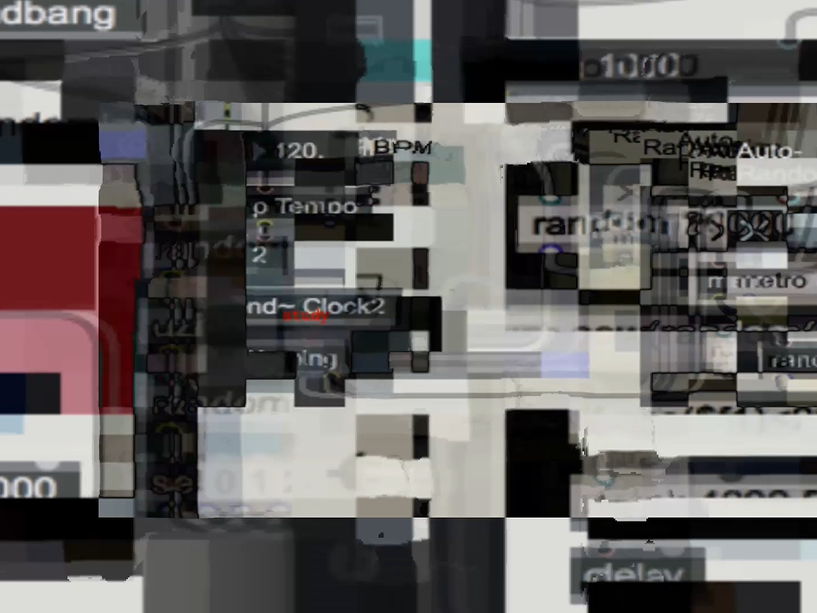The Persistence of Elusion: Hard and Soft Dances
Jeff Morris
This work began as music without video. It creates new music by recreating a classic 1980s style drum machine and wildly disrupting the one thing that is supposed to be stable in it: the clock that drives all the sound synthesis as it moves steadily forward. Banal and campy drum beats become novel sounds, textures, and even melodies when the rug (of time) is pulled from under them. It was accepted for the Conference on Computation, Communication, Aesthetics & X (xCoAx), which also required a paper about the music. In it, I explained the above and its connections to Salvador Dalí via the title and Dalí theoretical explorations of the hardness and softness of things, including time. Reviewers seemed to love the explication and also like the music, but I sensed they felt something missing. Perhaps because this was not a conference for music only, where everyone is comfortable relying solely on their ears, I guessed that they probably wanted something to watch.
This (admittedly imagined) desideratum disappointed me somewhat and moved me to satisfy it in a way that also thwarts it. Being a fan of Dada and related movements, being mindful that reviewers seemed to like most that which was absent from the music (i.e., the essay), being that I describe my overall metapractice as native composition, in which I strive to let the most material and meaningfulness emerge by turning a given performance situation upon itself, and with In the Middle of the Room in the back of my mind, I used the text of the essay and current trends for providing visuals for laptop performances to create the video content.
It has become common for laptop performers to display their computer screens. My screen was boring (cheap drum machine-style on/off switches) and obtuse, since it was only meant for me to see, like the checkbox labeled “strive for normalcy.” I added to this—and obscured it with—video of my face as I worked (as my built-in camera could see me in the dark venue) to add the stamp of my embodied presence, and I created a crude video effect that only showed the parts of me or my screen that were moving, letting the inactive areas fall out of focus in a glitchy fashion.
The same pattern of self-defeating straightforwardness operates on the text. It appears one word at a time, mostly linearly but with its direction changing as wildly as the clock in my hacked virtual drum machine, via a drunk walk randomized process triggered by events in the music. The balance between linearity and disjunct recombination yields a liminal kind of legibility that allows new meaningfulness to emerge in the audience’s minds that is both relevant to the subject matter and unique to each person’s perception. While its speed and scrambled syntax make it unquotable, this seems to evoke a sense that an elusive meaning exists that is deeper than the points made in the printed essay.
About the Artist
Jeff Morris creates musical experiences that engage audiences’ minds with their surroundings. His performances, installations, lectures, and writings appear in international venues known for cutting-edge arts and deep questions in the arts. He has won awards for making art emerge from unusual situations: music tailored to architecture and cityscapes, performance art for the radio, and serious concert music for toy piano, robot, Sudoku puzzles, and paranormal electronic voice phenomena.
He has presented work in the Onassis Cultural Center (Athens), Triennale Museum (Milan), D-22 (Beijing’s avant-garde music scene), the International Symposium on Electronic Art (Vancouver, Canada), the Lyndon B. Johnson Presidential Library and Museum (Austin), the Chicago Architecture Foundation’s “Open House Chicago,” and the Boston Microtonal Society. His work has won awards in the Concours de Bourges (France), Viseu Rural (Portugal), “Music in Architecture” International Competition (Austin), the Un“Cage”d Toy Piano Competition (NYC), and the “Radio Killed the Video Star” Competition (NYC). His music is on Ravello Records.
